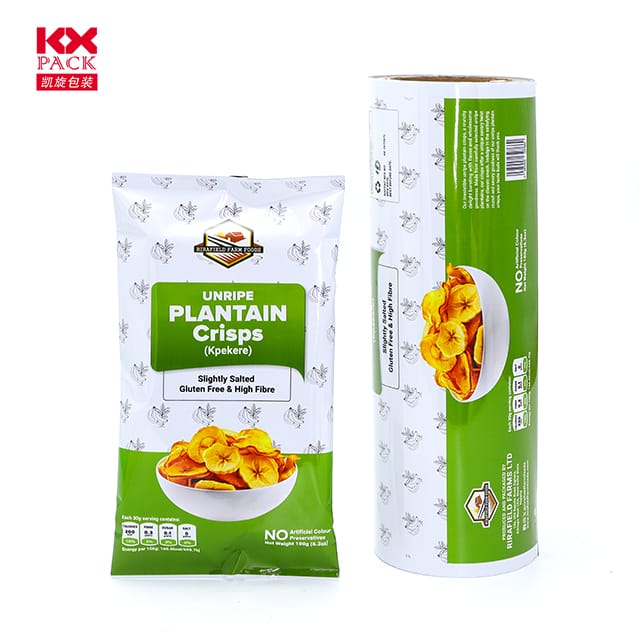Еволюцията на опаковките филми: Иновации, движещи устойчивостта, Функционалност, и обжалване на потребителите
Опаковъчни филми
In today’s fast-paced consumer landscape, packaging films play a pivotal role in preserving products, Подобряване на видимостта на марката, и постигане на целите за устойчивост. От храна и фармацевтични продукти до електроника и електронна търговия, Тези универсални материали са неразбраните герои на съвременните опаковки. Но това, което прави опаковъчните филми толкова незаменими, and how are manufacturers innovating to keep up with evolving demands? Let’s dive into the world of packaging films—exploring their types, ползи, предизвикателства, and future trends.
1. What Are Packaging Films?
Packaging films are thin, flexible materials used to wrap, уплътнение, or protect products. They can be made from various polymers, including:
- Полиетилен (PE): Common in grocery bags and food wraps due to its flexibility and moisture resistance.
- Полипропилен (ПП): Known for its clarity and strength, often used in snack packaging and labels.
- Polyester (ДОМАШЕН ЛЮБИМЕЦ): Offers high tensile strength and heat resistance, ideal for blister packs and ovenable trays.
- Биоразградими филми: Made from materials like PLA (Полилактична киселина) or starch blends, targeting eco-conscious markets.
- Multi-Layer Films: Combining different polymers to optimize barrier properties (e.g., кислород, влага, светлина) for extended shelf life.
2. Key Functions of Packaging Films
Modern packaging films do much more than just contain products. They serve multiple critical roles:
- Protection: Shielding items from contamination, влага, UV rays, and physical damage.
- Preservation: Extending shelf life for perishables like fresh produce, Меса, and pharmaceuticals.
- Удобство: Enabling easy-to-open, resealable, or single-serve packaging formats.
- Брандиране: Providing a printable surface for logos, product info, and eye-catching designs.
- Устойчивост: Reducing waste through lightweighting, recyclability, or compostability.
3. Innovations Shaping the Future of Packaging Films
The packaging industry is undergoing a transformation, driven by consumer demand for sustainability and advanced functionality. Here are some game-changing trends:
А. Sustainable Alternatives
- Биоразградими и компостируеми филми: Brands are switching to plant-based materials to reduce plastic pollution. Например, Coca-Cola and Nestlé have trialed compostable coffee pods and snack wrappers.
- Recycled Content: Using post-consumer recycled (PCR) plastics in film production to close the loop.
- Paper-Based Hybrids: Combining paper with a thin plastic barrier for recyclability without sacrificing performance.
Б. Smart Packaging Films
- Активна опаковка: Films embedded with antioxidants, antimicrobial agents, or oxygen scavengers to prolong freshness.
- Intelligent Films: Temperature-sensitive indicators, QR кодове, or NFC tags for traceability and consumer engagement.
- Barrier Enhancements: Nanotechnology-coated films that block gases and odors more effectively than traditional materials.
° С. Lightweighting and Efficiency
- Thinner, Stronger Films: Advances in polymer science allow for down-gauging (reducing thickness) without compromising strength, saving material costs and reducing environmental impact.
- Mono-Material Structures: Simplifying recycling by using a single type of polymer instead of multi-layer blends.
4. Challenges in the Packaging Film Industry
Despite innovations, several hurdles remain:
- Cost vs. Устойчивост: Eco-friendly materials often come at a higher price point, making adoption slower for budget-conscious brands.
- Recycling Infrastructure: Many biodegradable films require industrial composting facilities, which are scarce in some regions.
- Performance Trade-offs: Some sustainable films may lack the barrier properties or durability of conventional plastics.
- Regulatory Complexity: Navigating global regulations on plastic use, labeling, and waste management.
5. The Consumer Perspective: What Do Shoppers Want?
Today’s consumers are more environmentally aware than ever. Surveys show:
- 70% of shoppers prefer brands with sustainable packaging.
- 60% are willing to pay more for eco-friendly options.
- Transparency matters: Consumers want clear labels about recyclability and compostability.
Brands that prioritize sustainability—without sacrificing convenience or aesthetics—are winning loyalty.
6. The Road Ahead: A Circular Economy for Packaging Films
The future of packaging films lies in aкръгова икономика model, where materials are reused, recycled, or composted. Key strategies include:
- Design for Recyclability: Creating films that are easy to separate and process.
- Collaboration Across the Supply Chain: Working with recyclers, policymakers, and retailers to improve infrastructure.
- Investing in R&д: Continuously innovating to bridge the gap between performance and sustainability.
Заключение: Packaging Films in a Sustainable World
Packaging films are at a crossroads—balancing the need for product protection with the urgency of environmental stewardship. As technology advances and consumer expectations evolve, the industry must adapt to deliver solutions that are both functional and future-proof.
What’s your take on packaging films? Do you prioritize sustainability when shopping, or do you think there’s room for improvement in eco-friendly options? Share your thoughts below!







